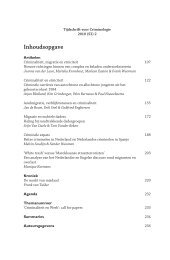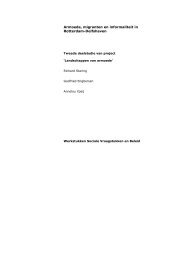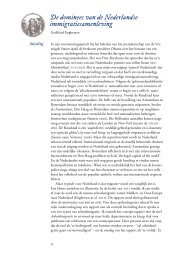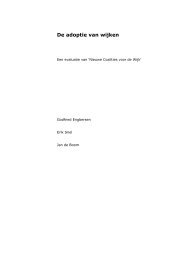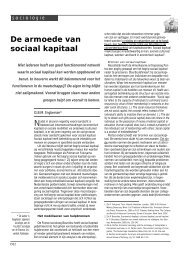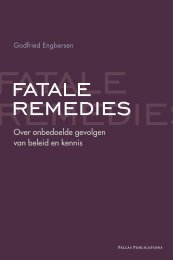THE SOCIAL CONSTRUCTION OF ILLEGALITY AND CRIMINALITY ...
THE SOCIAL CONSTRUCTION OF ILLEGALITY AND CRIMINALITY ...
THE SOCIAL CONSTRUCTION OF ILLEGALITY AND CRIMINALITY ...
You also want an ePaper? Increase the reach of your titles
YUMPU automatically turns print PDFs into web optimized ePapers that Google loves.
18<br />
GODFRIED ENGBERSEN <strong>AND</strong> JOANNE VAN DER LEUN<br />
illegal immigrants are distinct. The differential involvement reflects the<br />
difference between those who can fall back on strongly established migrant<br />
communities and those who cannot do so or only to a limited extent.<br />
Remarkable in this connection is the difference between Turks, who have<br />
access to their own solid resources, and Moroccans, who are sooner inclined<br />
to resort to (drug-related) crime. Africans were found to rely more<br />
on market forces than the other groups. Our analysis suggests that the<br />
perception of the ‘criminal illegal immigrant’ first and foremost reflects<br />
the division between wanted and unwanted immigrants, which is the result<br />
of the shift towards a restrictive policy.<br />
Secondly, we have argued that both the relatively limited involvement<br />
in crime in general and the differences between groups can be explained<br />
by the embeddedness of illegal immigrants in the labour sphere and the<br />
support by ethnic communities. Certain groups of illegal immigrants have<br />
sufficient opportunities to acquire income and, in addition, they can rely<br />
on various provisions such as housing and the access to medical care.<br />
Thirdly, we pointed to the practical realisation of the restrictive policy<br />
towards illegal immigrants. Implementation practices, which are often more<br />
flexible than one might surmise from legislation, function as buffers that<br />
enable illegal immigrants to survive without having to resort to criminal<br />
means.<br />
These observations do raise the question as to whether the ‘arrangement’<br />
described will hold in its current form. Various legal measures have made<br />
it increasingly difficult for illegal immigrants to support themselves through<br />
formal labour. Also, the access to public services have become subject to<br />
increasingly severe checks, witness the implementation of the Linking Act.<br />
At the same time, there are no clear indications that illegal immigrants are<br />
leaving the country or that newcomers leave the Netherlands aside. As a<br />
result, illegal immigrants do become more dependent on family and relatives,<br />
and are forced into a more marginal social position. This shows that<br />
the stricter policy has real and sometimes unintended consequences, both<br />
for the illegal immigrants and their immediate social environment. By<br />
implication, the exclusion of illegal immigrants can result in a greater push<br />
towards criminality when these buffers loose their strength. This might<br />
happen when (a) the restrictive policies are further pushed to their limits<br />
and (b) when the illegal immigrants in question cannot rely on well-established<br />
and resourceful immigrant communities. As, in the light of the<br />
increasing fragmentation of migration, the latter is not unlikely to happen<br />
much will depend on the policy stand that will be taken in the near<br />
future.



